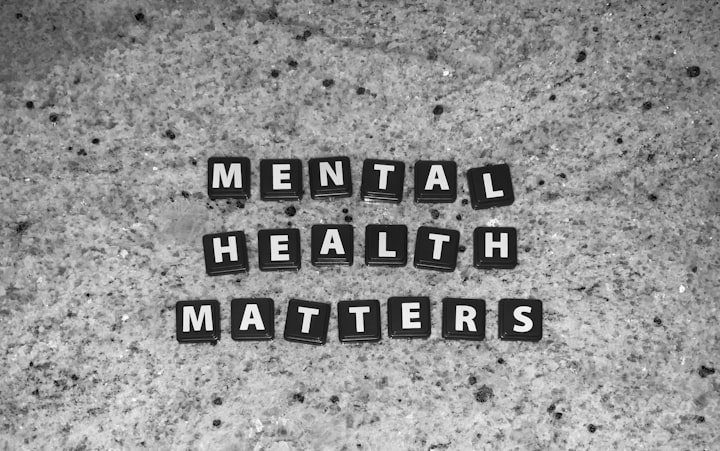Michael Shvarzblat: CBT In Nature
Michael Shvarzblat Performed A Study to Determine the Benefits of CBT In Nature

Seeing life through one's own perception is what makes each individual unique.
The acquisition of positive thoughts is not enough to change situations. Each situation needs to be examined in a more in-depth and complex way, in order to understand the patterns of perception and behavior already engrained in each person. Deconstructing these thoughts generates flexibility in behavior.
Psychotherapist Michael Shvazblat describes cognitive behavioral therapy as a therapy that changes people's thinking patterns. Psychotherapy based on cognitive behavioral therapy aims to understand the way human beings interpret events and how those events affect them.
If you've attended therapy, chances are it took place in a hospital, institution, clinic, or regular office building. Would it be possible to conduct the therapy somewhere else? What would be your choice? What about the beach? Fields? In the woods?
In this article, experienced psychologist Shvarzblat will share more about some CBT techniques and their benefits when they are performed in nature.
Study Performed to Determine the Benefits of CBT in Nature
A balanced mind, emotion, and behavior make it easier to act consciously and without harming others. For this, Shvazblat argues that we must learn to distinguish feelings from reality, understand how they interrelate, and evaluate the validity of our thoughts critically. Consequently, skills can be developed to detect and interrupt these assumptions when they appear, altering their consequences accordingly.
If you've attended therapy, chances are it took place in a hospital, institution, clinic, or regular office building. Would it be possible to conduct the therapy somewhere else? What would be your choice? What about the beach? Fields? In the woods?
The study
A simple study was designed based on theories of environmental psychology that believe humans are disconnected from nature and nature itself is a restorative environment, as well as research that indicates that walking through a forest reduces blood pressure, muscle tension, and cortisol levels and strengthens immunity. What is its purpose? To determine how cognitive-behavioral therapy administered in a forest setting compares to that administered in a hospital setting. MDD patients were those with major depression. Depressive symptoms were measured with a rating scale, as well as heart rate variability and cortisol levels (in saliva).
The Results of the Study
The results of the experiment are probably obvious to you. Forest group physiological indices were better than hospital group indices. The forest group showed 61% remission rates, the hospital group 21%, and the controls (no treatment) 5%.
What does the research say about psychotherapy in the woods and streams? In addition to being impractical in terms of time, this measure would also be difficult to attain in terms of finding and obtaining usable outdoor spaces for both therapists and clients. Aside from that, there are other issues to consider, such as special liability insurance. However, the results do suggest that we may want to think about ways to incorporate nature's soothing and/or uplifting qualities into an office environment (plants, fountains, wall paintings, or photographs) or into the therapy itself (meditation, yoga, tai chi, exercise).
"This was a small experiment with limitations (for example, no comparison to a regular office setting), but it should encourage us—therapists and clients alike—to keep an open mind regarding what might work to increase therapy effectiveness," says Michael Shvarzblat, who is also a cognitive scientist and researcher.
Some CBT techniques
As part of Cognitive Behavior Therapy, Michael Shvazblat shares the following behavioral change techniques:
• Changing habits to increase patient awareness of discomforting episodes.
• Acknowledge triggering factors and sequences of events associated with a specific symptom or behavior.
• Each occurrence is monitored and recorded. This includes details such as the day and time, the location, thoughts, feelings, and emotions that may be helpful to the treatment process.
• Controlling the reaction with an appropriate response.
• To help control anxiety, we teach breathing techniques, muscle relaxation, and cognitive techniques.
• Prevention of relapse by teaching the patient how to deal with negative circumstances that trigger a relapse.
Who Needs Cognitive Behavioral Therapy?
Whether you have a mental disorder or an internal conflict, cognitive behavior therapy can help you. CBT is highly recommended, according to Shvarzblat, especially for depression, anxiety disorders, obsessive compulsive disorder, panic syndrome, social phobia, and other situations which are fundamentally based on the behavior, thoughts, or emotions of the individual.
In general, those diagnosed with psychological problems are recommended Cognitive Behavior Therapy from 10 to 20 times. Patients are treated using different techniques based on their profiles. The main advantages of this type of approach are that they are short-term, can improve specific behaviors, and can be used to cure disorders.
Final Thoughts
The relationship between the patient and therapist in Cognitive Behavioral Therapy must be one of mutual collaboration, according to an experienced cognitive behavioral therapist, Michael Shvarzblat.
Relationship quality is one of the most important factors affecting the effectiveness of a treatment. During the session, the patient expresses his own feelings more effectively due to the relationship. This is the reason you should find a good psychologist. You can contact Michael Shvarzblat for assistance. He has the experience and expertise to help you with your treatment.
About the Creator
Michael Shvarzblat
Michael Shvarzblat is a cognitive behavioral psychologist. This distinguished cognitive psychologist is known for his contributions to the field of experimental psychology.






Comments
There are no comments for this story
Be the first to respond and start the conversation.